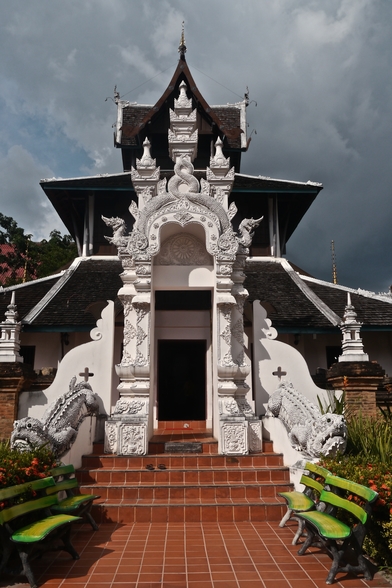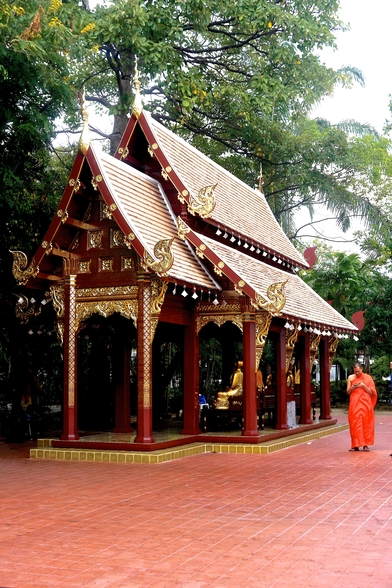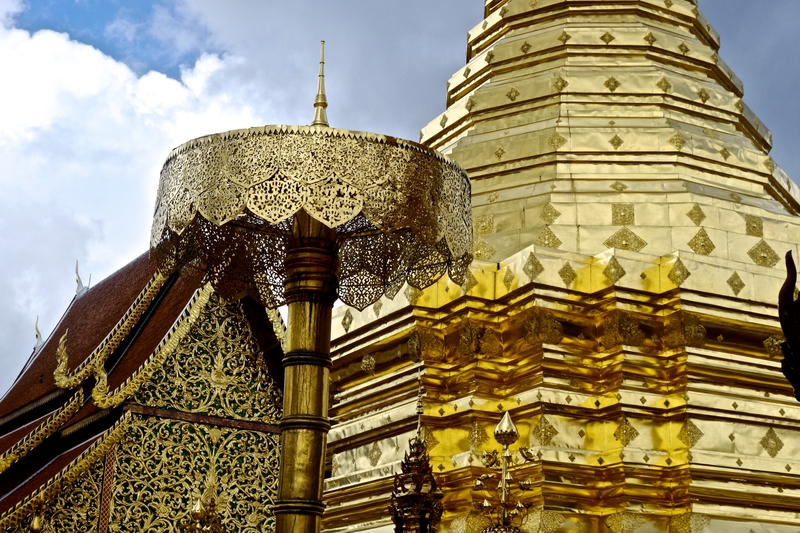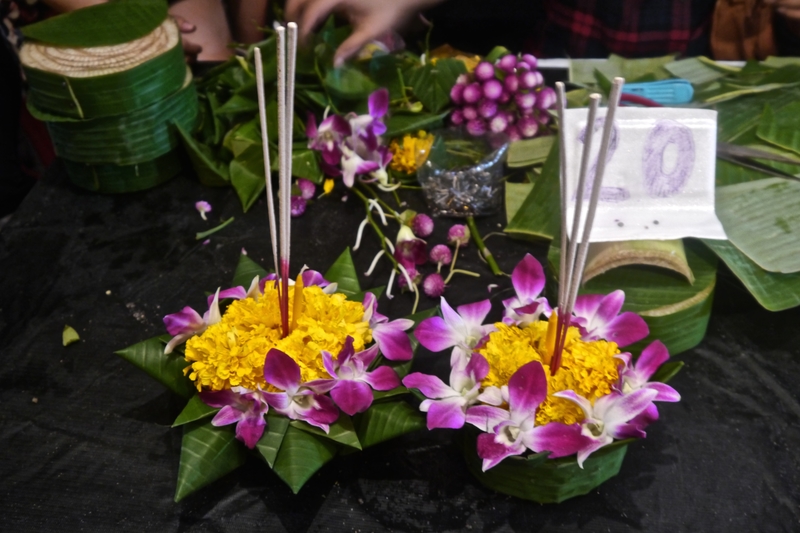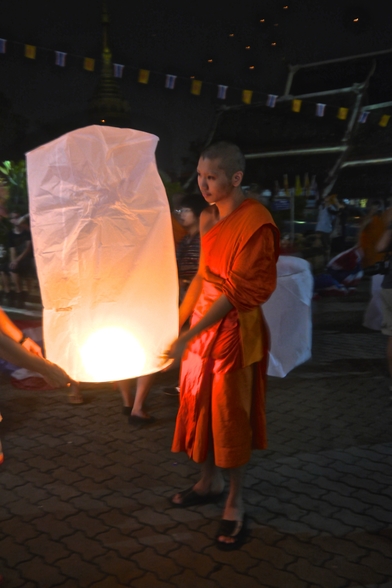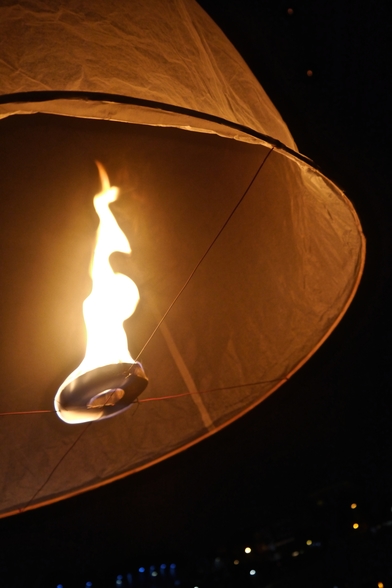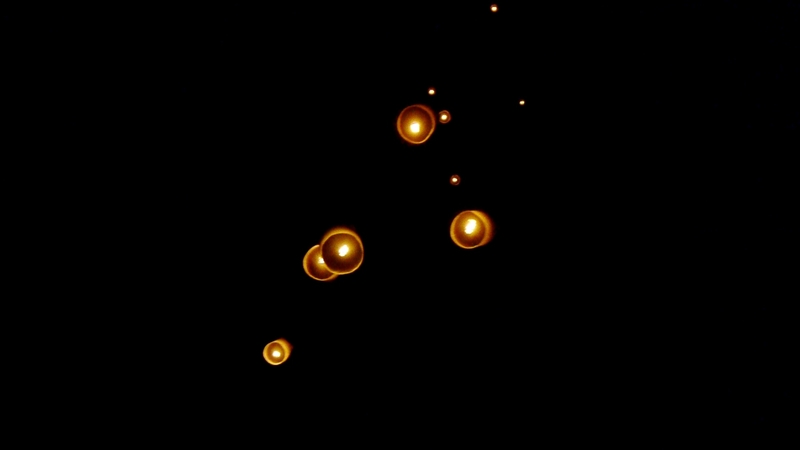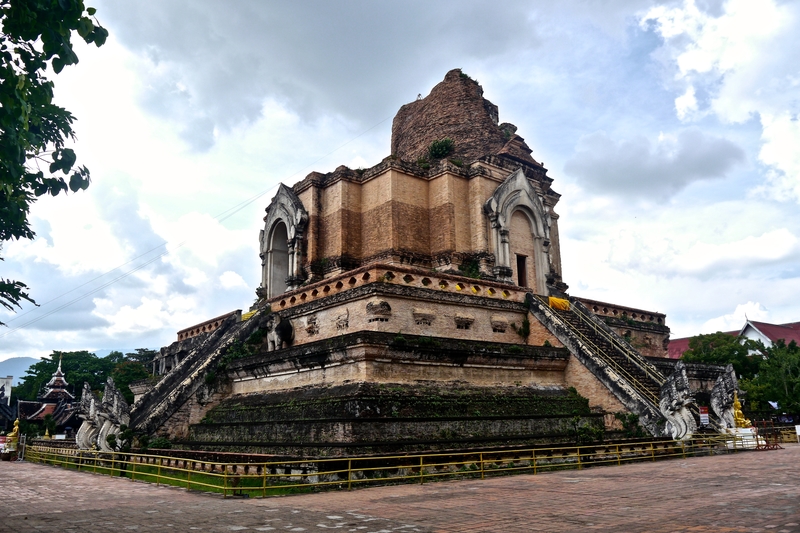
Visiting Chiang Mai during the Loi Krathong Festival
Chiang Mai has long been the heart of Thailand’s backpacker culture–a sanctuary of sorts that captures the hearts of travelers with its rich cultural heritage and laid-back vibe.
Chiang Mai is northern Thailand’s largest city, as well as its most culturally and architecturally significant. The sheer number of temples and shrines packed into a tiny radius is simply astounding and it became immediately apparent to me why so many people in my hostel had come to Chiang Mai for a few days and ended up staying weeks. The city sits nestled in the foothills of Thailand’s rolling mountains and draws visitors, both for its surrounding natural beauty, as well as for the cultural gems that lay within its ancient walls.
Since I didn’t have time to do everything I would have liked to do while in the Chiang Mai area, I selected to spend my time between hiking in the mountains with Pooh Eco-trekking, visiting the Ran Tong Elephant Sanctuary and meandering the city’s charming streets.
I spent my first day in the city exploring the various crumbling temples and golden shrines that lay scattered about the city center. Wandering on my own, I visited numerous temples including Wat Phra Singh, Wat Chedi Luang and the famous gold-laden Wat Doi Suthep–a temple perched on a hill roughly half an hour from Chiang Mai.
Chiang Mai’s beautiful temples and deep-rooted history have become a draw for tourists from around the world, but I quickly found that there is something else that keeps them coming back,. Something akin to a magnetic pull. I presume it is a combination of the city’s low prices, its delicious food offerings, its exotic sights and smells, its international vibe and its air of spirituality.
Chiang Mai houses an eclectic mix of Thai university students, partying westerners, retiring expatriates and orange-clad monks. It is worldly, yet deeply traditional. And while enticing tourists with its new world amenities and old world charm, Chiang Mai has managed to dodge the congestion, traffic and pollution of Bangkok to the South.
Chiang Mai is lovely. Yet, part of the reason that tourists so often find themselves extending their stays, is that adventure abounds outside the city’s walls. Whether you are looking to tour traditional villages, partake in cooking classes, join meditation retreats, hike raft or bike, the Chiang Mai area offers something for just about anyone.
My visit to Chiang Mai coincided with Thailand’s yearly Loi Krathong festival–a celebration of lights and waters that has received international renown.
On the eve of my last day in Chiang Mai, after an eventful morning at the Ran Tong elephant sanctuary and an hour-long Thai massage that cost a whopping six dollars, I met up with a few friends I had made at the hostel a few days prior and, together, we walked down to the river.
Thousands of people had already gathered at the water’s edge to launch their flower boats into the river and release their paper lanterns into the sky.
Every year, during the twelfth month of the lunar calendar, thousands of Thais make a wish and release floating flower boats into the water.
The ritual is rooted in the tradition of paying homage to water spirits and, during the festival, stalls lining the river banks sell ornate flower decorations to locals and tourists alike. The Loi Krathong festival often coincides with another festival called Yi Ping–in which thousands of paper lanterns are released at once, drifting sheepishly like jellyfish into the dark night sky.
I missed the famous Yi Peng lantern release by about a week, but I was able to get a taste of what the spectacle must have been on the last day of the Loi Krathong festival. Though Loi Krathong is a festival of water, it has lately become associated with the release of paper lanterns as well, due to its close overlap with Yi Peng.
My friends and I mingled with the throngs of tourists and locals that poured into the streets. We peeked into temples to see young monks lighting lanterns, stopped by food stalls to buy one too many portions of mango sticky rice, witnessed a parade in which Thais showcased their elaborate floats and stopped every so often to enjoy street performances that ranged from girl scout songs to Hare Krishna chants.
The vibe was electric and festivities lasted till the wee hours of the morning. While I perused the stalls of the night markets and cast my gaze upwards at the illuminated night sky, I tried not to think about my early flight back to Bangkok the next day. Or about the closing chapter of my adventures in Thailand’s North.
I could have easily been one of those backpackers who planned on visiting Chiang Mai for a few days and, instead, ended up staying weeks. And had it not been for the fact that I had to return to work in a few days, I probably would have.
When I finally felt that I could not justify staying awake any longer, my friends and I headed back to the hostel to get some sleep.
But first, we each bought a paper lantern, walked to the water’s edge and, on the count of three, released the floating orbs of light into the sky.



